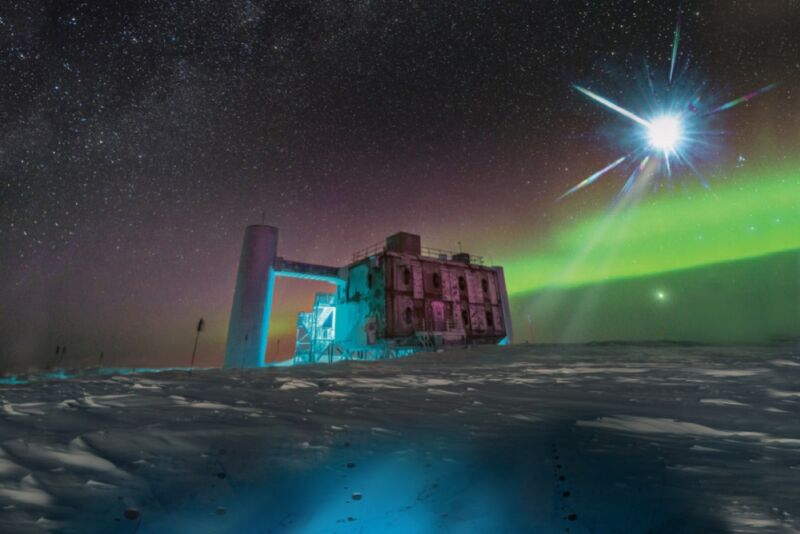IceCube neutrino analysis pegs possible galactic source for cosmic rays

Enlarge / Artist's representation of a cosmic neutrino source shining above the IceCube Observatory at the South Pole. Beneath the ice are photodetectors that pick up the neutrino signals. (credit: IceCube/NSF)
Ever since French physicist Pierre Auger proposed in 1939 that cosmic rays must carry incredible amounts of energy, scientists have puzzled over what could be producing these powerful clusters of protons and neutrons raining down onto Earth's atmosphere. One possible means for identifying such sources is to backtrack the paths that high-energy cosmic neutrinos traveled on their way to Earth, since they are created by cosmic rays colliding with matter or radiation, producing particles that then decay into neutrinos and gamma rays.
Scientists with the IceCube neutrino observatory at the South Pole have now analyzed a decade's worth of such neutrino detections and discovered evidence that an active galaxy called Messier 77 (aka the Squid Galaxy) is a strong candidate for one such high-energy neutrino emitter, according to a new paper published in the journal Science. It brings astrophysicists one step closer to resolving the mystery of the origin of high-energy cosmic rays.
"This observation marks the dawn of being able to really do neutrino astronomy," IceCube member Janet Conrad of MIT told APS Physics. "We've struggled for so long to see potential cosmic neutrino sources at very high significance and now we've seen one. We've broken a barrier."